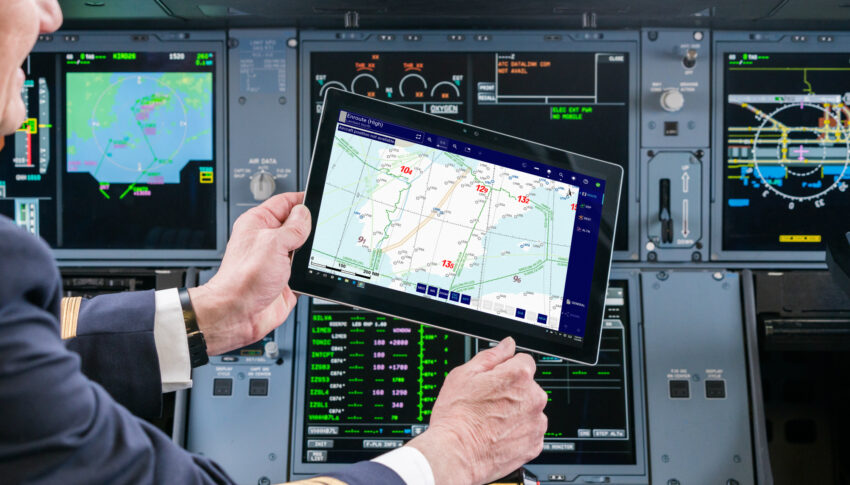Eyes around the aviation industry are scouring the skies to find harbingers of recovery: China, Australia, New Zealand, and most recently the United States have all started showing some signs of recovery.
Speaking recently with a number of inflight connectivity industry executives, a strong sense of resurgence in the US market, and a thirst for accelerated industry digitalisation, were common themes. Between surging local demand and a combination of factors spurring the return to flying, we ask, are these some of the first signs of real — and digital-led — recovery in the aviation industry?
Niels Steenstrup, senior vice president of Inmarsat’s inflight connectivity business, explains that “I think we reached our low of coming through the pandemic about six months ago. Now it’s a slow uptick, and it may become a much faster uptake over the next nine months or so.”
“Encouragingly,” Steenstrup reveals, despite a substantial portion of the world fleet being grounded, linefit and retrofit installations of inflight connectivity systems — both new and upgraded — have not flagged. “We have not noticed a downturn in installations in 2020.”
‘I think there’s opportunities coming out of COVID, with the shutdown,” concurs Viasat’s vice president and general manager for commercial aviation Don Buchman, highlighting that the return to flying, the growth in connected aircraft and a sense that the industry needs to make the most of new technologies are intertwined.

“Digital transformation has happened, but it’s happened in pockets, right? Now you have applications and tools, but you’ve got a lot of context switching — there hasn’t really been a unified thing,” Buchman says. “When an aircraft gets ready to go, you’ve got the baggage handlers, catering, fuel, flight, pilots, crew — you’ve got all these different disparate systems that need to all check in to make sure that systems are go. I think there’s a lot of real time tools and information that we’ve seen in other industries, and I think the airlines are eagerly looking for that.”
Adding the accelerant that is digitalisation to this heady context could speed up the recovery even further.
Inmarsat’s Steenstrup says that he and colleagues “feel confident that as we move past the pandemic, connectivity will remain high on airlines priority list, and I can tell you — from the level of activity that I’m seeing within my team. and the level of campaigns we have in progress, and dialogue both with our existing carriers that want to evolve their solutions and do more and interesting things with their customers, but also for the potential or prospective airlines — that there is demand.”
A combination of factors are contributing to this resurgence. To start with, US airlines are bang in the middle of a transition period from second-generation inflight connectivity products like Gogo air-to-ground and Ku-band satellite to faster third-generation systems like Ka-band offerings.
In terms of finances, the pandemic relief CARES Act insulated airlines from some of the worst cash crunches of the pandemic, meaning that capital expenditure can continue.
On the demand side, the recertification, return to production and return to service of the Boeing 737 MAX — and, on the other side of the Atlantic, the projected rate increase for the A320neo — signals a firming linefit need.
At the same time, the retirement of older fleets means that older and slower connectivity systems are taken out of the equation, slowly but surely improving the often whitelabeled reputation of “airplane wifi”.
Within the cabin, the increasing number of knowledge worker jobs that have normalised remote working means that, for many passengers, the tray table is the new cubicle, spurring demand for more, and better, connectivity onboard.
And, perhaps most importantly, the high vaccination rates, reduction in travel restrictions and relaxation of public health requirements has led to a growth in travel.
Data from the US Transportation Security Administration highlight that passengers are returning in their millions, with the threshold of two million travellers passing through TSA checkpoints surpassed on June 11th, marking a return to 74% of of the same day pre-pandemic in 2019, with numbers holding.
https://twitter.com/TSA_Northeast/status/1404413460222468107
These passengers are finding more connectivity on more planes — and more airlines — as they return. It’s faster, more reliable and with more throughput, meaning more passengers can use it. And, perhaps even more crucially, it’s robust enough, and at a keen enough price, that it opens the door to digitalisation opportunities never before seen in aviation.
Author: John Walton
Published: 29th July 2021
Join the Challenge
We are discussing this over in our Challenges Area: With the inflight connectivity demand resurgence signalling recovery in the US market, what other digitalisation opportunities do you think the market will seek to capitalise on next?




